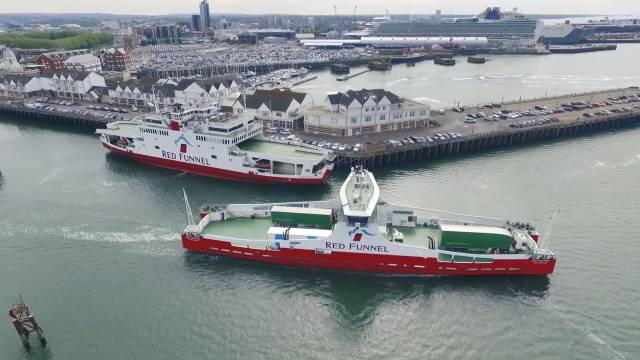As Afloat featured last month the naming ceremony of UK Isle of Wight operator's Red Funnel’s new freight ferry, Red Kestrel which officially entered service today following successful sea trials in the Solent.
Red Kestrel which was built by Cammell Laird on Mersesyside marks the operator's first dedicated Ro-Ro since the company’s inception almost 160 years ago and today the small ship set sail on a maiden voyage to the Isle of Wight.
“Fran Collins, CEO of Red Funnel, added: “Today marks a huge milestone in Red Funnel’s history and the Isle of Wight and we are incredibly proud that we can support the Island with its freight requirements. Red Kestrel is unlike any of our ferries and will play a very significant role within the business. It will increase our capacity to transport more private vehicles, enhancing convenience for our customers and giving them more options for when they wish to travel.”
Red Kestrel will operate between Southampton and the Isle of Wight and as a freight vessel, she is limited to 12 passengers and constructed specifically to provide additional year-round freight capacity for Red Funnel’s Southampton to East Cowes route.
At 74m in length, she provides 265 lane metres of roll-on/roll-off freight capacity, allowing for 12 HGVs.
To minimise the environmental footprint, the hull shape has been designed specifically to reduce wash and a propulsion package has been selected to make her highly fuel efficient. The use of proven azimuth thrusters supplied by Rolls Royce will also make the ship very manoeuvrable.
A dedicated drivers-only lounge offers comforts and features such as access to hot and cold food, reclining leather seats with footrests, free Wi-Fi and ample charging points.
Red Kestrel will use the same berths as Red Funnel’s existing Raptor class (see photo) ro-pax vehicle ferries in Southampton and East Cowes.































































